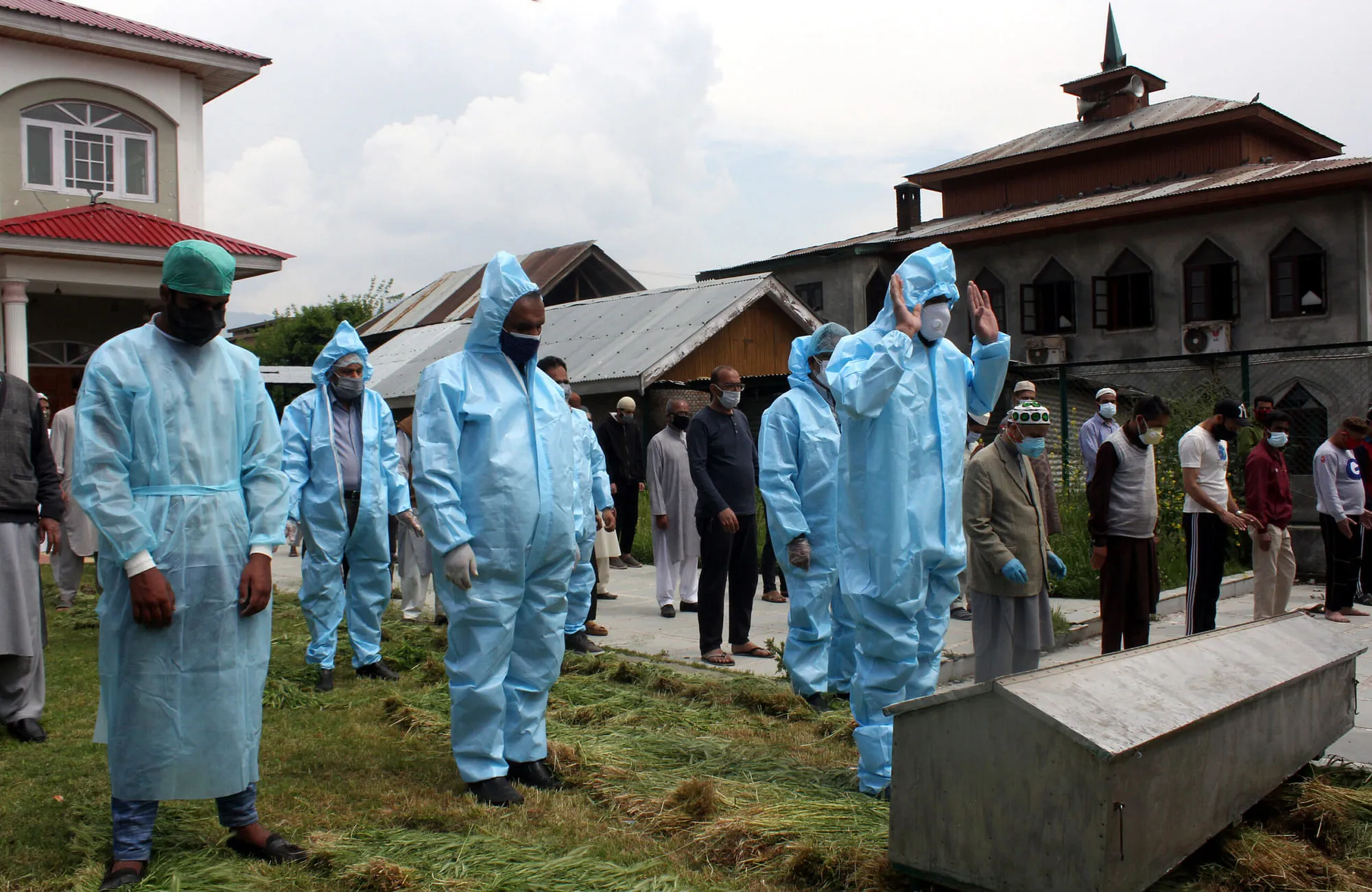According to the 2011 Census, youth account for a bulk of the overall population of Jammu and Kashmir. These include children, adolescents, and younger adults.
However, as we climb up the population pyramid, there is a steep decline in the population, indicating many children and adolescents with none or either of the parents alive.
Notwithstanding the logic behind these demographic figures stemming from the geopolitical context, insurgency, and conflict prevailing in the valley, it is imperative to explore the ‘stories behind the numbers’ of orphaned and female-headed households in Kashmir, especially in the COVID-19 era.
“Orphan” in Kashmiri societies indicates an individual whose father – usually the gendered head of the family in Kashmir – has passed away. Men are predominantly the heads and sole earning members of most Kashmiri families, as corroborated by one survey that reported that the Labour Force Participation Rate (LFPR) among women in Kashmir was abysmally low at 10.6% in 2015, compared with a national figure of 27.4%.
This elucidates and highlights the extent of economic hardships and vulnerabilities a household may face if the sole earning member is lost.
Their vulnerability is further amplified if they exhibit more female members than male members as female employment is frowned upon in many Kashmiri societies. In many such cases, the other members of the families take over the responsibilities of such orphaned families.
However, there are also instances when such families are thrashed out of their homes due to socio-cultural norms and traditional beliefs, pushing the orphaned family towards further catastrophe. Both the mother and children become vulnerable to physical, mental, and social harm in such circumstances.
Orphaned household is likely to be female-headed in our society and often faces social exclusion and ostracisation. Women and girls of such families face stigma and shame as they are taunted for having no male member/head in the house. Boys and young adults from such households become vulnerable to social exploitation.
They often have no means of attaining education, thereby resorting to informal and low-paying employment, constantly substantiating child labor.
Given the traumas that such families suffer while swimming the murky waters of survival in conservative Kashmiri societies, they likely suffer mental health impacts pushing the youth towards drugs and addiction to cope with the emotional pain.
The rising drug dependence of youth in the valley is an important indicator that corroborates this argument and projects a mass catastrophe as the nation’s future lies with the youth.
On the other hand, child abuse is a shadow pandemic in Kashmir; wherein mostly the perpetrators are the victims’ relatives.
Females who return to their parent’s houses (with or without children), in similar cases, are subjected to regulation by the male family members of the house, usually their father or brother, or uncle, thereby often exposing them to gender-based violence.
Domestic violence is a bitter truth that our society has allowed to exist and thrive. Compounded by the deteriorating mental health of the population, as per the recent survey of MSF, such women and children have limited-to-no means of support mechanisms. It can be argued that the COVID-19 pandemic rendered them even helpless as their support networks were lost due to the restrictions in mobility.
This indicates that the abuse victims had to carry on with their perpetrators and bear the physical beatings, thrashings, emotional and verbal abuse without having any sources to ventilate, thereby being pushed towards harmful coping mechanisms.
This accounts for one of the largest marginalised and invisible suffering groups in Kashmiri societies.
It can be argued that the state uses a narrow and unidimensional lens to assess the vulnerabilities of the needy, which often leads to an incomplete response.
The state has laid out social security nets, reservations, and quotas for ultra-poor and backward households. However, poverty cannot be a standalone indicator to analyse the strains underpinned by a vulnerable family.
The state needs to adopt an intersectional lens that includes dimensions beyond poverty that affect and render a household vulnerable in Kashmir. Orphanhood and loss of sole earning member of the family are essential dimensions of this lens.
The state bears the responsibility to provide equitable support to such households under the equations of social justice. The government needs to make education accessible for all orphans and introduce quota schemes for such students in the professional cadre.
Women who have lost their husbands need to be provided cash assistance and culturally and socially relevant vocational training that will help stabilise their household conditions.
The private sector also needs to come forward and accept orphan students in their schools without any hassle, provide full tuition fee waivers to them and ensure their career progression. Given the state’s demographics, it is a matter of moral responsibility and an obligation and need-of-the-hour.
The author is a global heath researcher who works in the areas of health policy and systems research with a focus on vulnerable and marginalized populations.
Disclaimer: The views and opinions expressed in this article are the personal opinions of the author.
The facts, analysis, assumptions and perspective appearing in the article do not reflect the views of GK.






